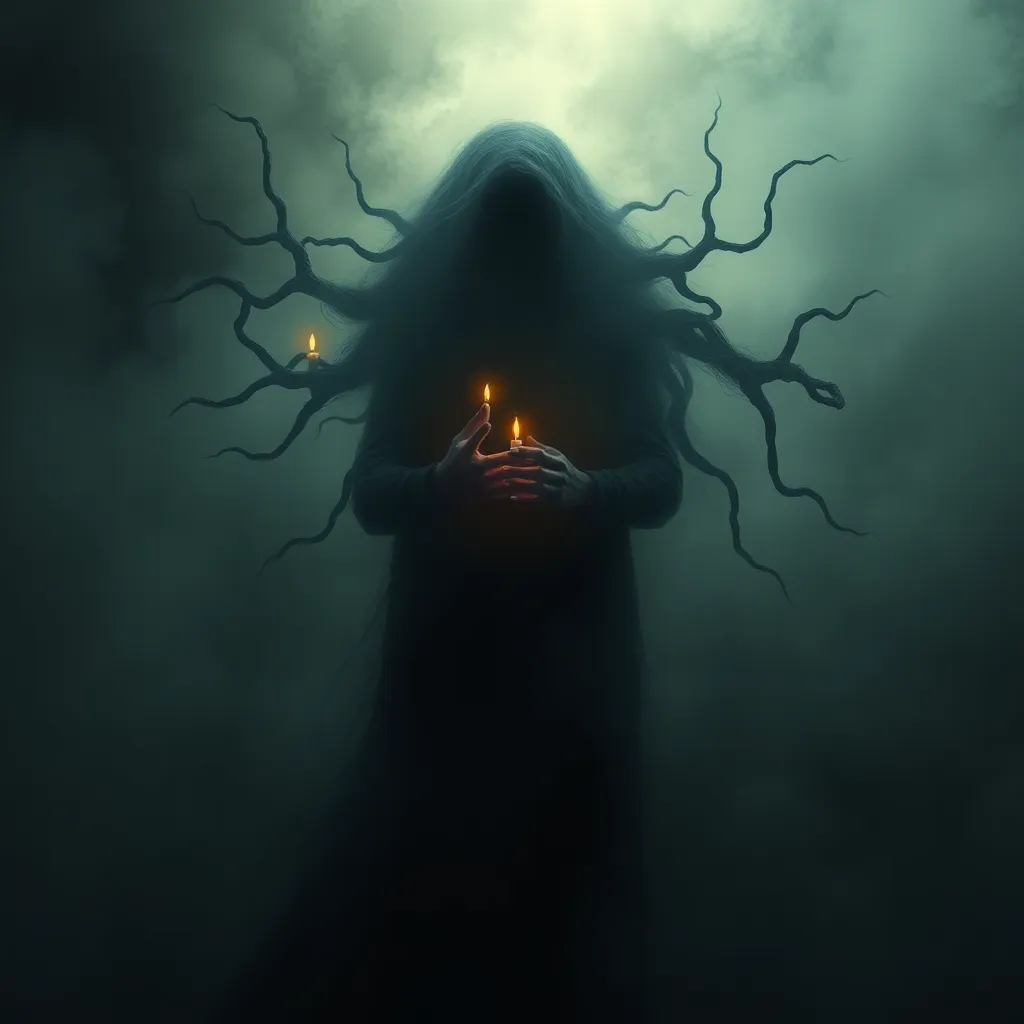The Dybbuk’s Embrace: A Journey into the Psychology of Dybbuk Possession
I. Introduction to the Dybbuk
The Dybbuk is a fascinating and complex figure in Jewish folklore, defined as the malicious spirit of a dead person that possesses the living. The term “dybbuk” is derived from the Hebrew word “dibbuk,” which means “to cling” or “to attach.” This concept has its roots in Kabbalistic teachings that emerged in the 16th century, particularly in the mysticism surrounding the soul’s afterlife and its potential unrest.
Dybbuk possession is not merely an isolated phenomenon but is steeped in cultural significance, reflecting collective fears, societal norms, and the human psyche’s struggles. The purpose of this article is to delve into the psychological aspects of dybbuk possession, exploring how it functions as a narrative device that articulates deeper emotional conflicts and societal issues.
II. Historical Context of Dybbuk Beliefs
The belief in dybbuks has evolved significantly through the centuries. Initially, dybbuks were viewed as spirits seeking redemption or closure, often possessing individuals to fulfill unfinished business from their lives. Over time, however, they began to be associated with negative traits, becoming symbols of fear and despair.
Notable cases throughout Jewish history, such as the famous dybbuk of Rabbi Loew of Prague, have shaped public perception and understanding of these spirits. In literature and the arts, the dybbuk has been depicted as a reflection of societal fears regarding death, trauma, and the impact of unresolved emotional conflicts. One of the most famous literary works, S. Ansky’s play “The Dybbuk,” highlights these themes, illustrating the tragic consequences of love and loss.
III. Psychological Theories Behind Dybbuk Possession
Understanding dybbuk possession through a psychological lens reveals much about the human experience. Possession can be seen as a manifestation of unresolved trauma, grief, or emotional turmoil. In many dybbuk narratives, the possessed individual often experiences significant life stressors, such as loss or abandonment, which can lead to psychological disintegration.
Dissociative identity disorder (DID) and related phenomena provide a framework for understanding these experiences. DID, characterized by the presence of two or more distinct personality states, can serve as a parallel to the concept of dybbuk possession, where the individual feels overtaken by an external force, often reflecting their inner struggles and traumas.
IV. The Dybbuk as a Metaphor for Internal Conflict
The dybbuk serves as a powerful symbol of unresolved emotions and internal conflict. It represents the struggle between personal identity and the external influences that seek to dominate or control an individual. The possession experience can symbolize the feeling of being trapped by one’s past or by societal expectations.
Case studies of individuals who report dybbuk-like possession often reveal a deep connection to their personal histories. These individuals may feel as though they are embodying the pain, fears, or desires of someone else, reflecting the complex interplay of identity and emotion.
- Case Study 1: A woman who experienced the death of her mother may report feeling as though her mother’s spirit is influencing her choices, leading her to behave in ways that contradict her own desires.
- Case Study 2: A man haunted by guilt over not having reconciled with a deceased friend may describe episodes where he feels possessed by the friend’s spirit, urging him to make amends.
V. Cultural Interpretations of Dybbuk Possession
The concept of dybbuk possession can be compared to other cultural narratives of possession found in various societies. From the voodoo practices in Haiti to the exorcism rituals in Christianity, possession often reflects deep-seated fears and societal norms.
Community and familial dynamics play a significant role in shaping the experiences of those believed to be possessed. In Jewish culture, for example, the family may engage in rituals to help the possessed individual, highlighting the importance of social support in the healing process.
Gender roles also influence the portrayal of dybbuk victims, with women often depicted as more vulnerable to possession due to societal expectations and emotional burdens placed upon them. This dynamic raises questions about the intersection of gender, power, and psychological distress in the context of dybbuk possession.
VI. Modern Psychological Perspectives on Possession
With the rise of mental health awareness, the understanding of dybbuk beliefs has shifted. Many contemporary psychologists view possession-like symptoms through the lens of mental health disorders rather than spiritual phenomena. This shift has profound implications for individuals experiencing such symptoms, as it encourages seeking treatment rather than fearing stigma.
Clinical approaches to addressing possession-like experiences often involve therapy that focuses on trauma, grief, and identity. Techniques such as cognitive-behavioral therapy (CBT) and narrative therapy can help individuals process their experiences and reestablish a sense of self.
The intersection of spirituality and psychology also plays a crucial role in understanding possession. Many individuals still seek spiritual explanations for their experiences, and integrating these beliefs into therapeutic practices can enhance the healing process.
VII. The Dybbuk in Popular Culture
Contemporary representations of the dybbuk in film and literature have sparked renewed interest in this ancient concept. Movies like “The Possession” and various adaptations of “The Dybbuk” continue to explore themes of possession, trauma, and the supernatural.
The resurgence of dybbuk themes in modern media has influenced public perception, often blurring the lines between folklore and psychological understanding. As these narratives become more prevalent, they provide a platform for discussing the psychological complexities associated with possession.
VIII. Conclusion: The Enduring Legacy of the Dybbuk
The psychological implications of dybbuk possession continue to resonate in today’s society. These narratives serve as a reminder of the complex interplay between folklore, culture, and mental health. The dybbuk represents not only a fear of the unknown but also the struggle to confront and integrate unresolved emotions and experiences.
In a world where mental health awareness is increasingly important, the relevance of dybbuk narratives invites us to reflect on our own internal conflicts and the stories we carry. Ultimately, the dybbuk embodies the enduring legacy of our human experiences, reminding us of the profound connection between folklore, psychology, and culture.



